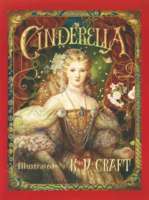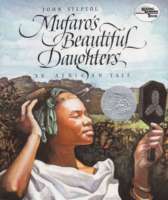The Real Princesses
by Tammy Y. Spann Frierson
I often refer to my class as the Sensations; a beautiful eclectic group of ten boys and ten girls who thirst for learning new things. I have eight Caucasian students, eight African American students, one Latino student, two Asian students, and one biracial student. The class is a multiage setting with seven three year olds, seven four year olds, and six kindergarteners.
At times I read popular children’s stories without showing students the pictures. I also read various picture-less chapter books to my students. I consider both of these techniques a form of storytelling. I do this to allow them to create their own images of the characters of the stories. Since there was a major buzz in the air about the December release of the movie, The Princess and the Frog, I asked students bring in their favorite princess or prince story for me to read to the class.
What makes a princess?
I was familiar with the four books that students brought in for us to read and to discuss the similarities and difference in the stories. I placed three of the books on the board and began reading the first story, a Disney version of Cinderella brought in by an African American girl. I placed the book inside a manila folder as I read so the students didn’t see the cover of the book. Then, I read the other three books: The Little Mermaid based on the Disney movie (provided by an African American girl), Aida by Leontyne Price (provided by a Korean girl), and Mulan based on the Disney movie (provided by a Caucasian girl). None of the students brought in any books about a prince. After I finished the stories, I asked the students to help me make a list of the characteristics of a princess. The list consisted of the following words: nice, kind, pretty, a girl, smart, happy, a friend, beautiful, and a lady. After the class was satisfied that the list was complete, I added ‘a princess is a helper to her friends and tries her best at everything she does.’ I then asked the students how many princesses we had in our class. In my mind the students would count the ten girls in the class and we would move on to the similarities and differences activity I had planned. To my surprise one of my four year-old students named Maris (all names are pseudonyms), immediately pointed to a Caucasian girl with blonde hair named Lily.
I asked Lily to stand up and join me in front of the class. I complimented her on her beauty and went over the list of characteristics we had created. Lily met the requirements. I then asked an African American, Korean, and Indian girl to join us and we continued my princess characteristic check. They too met all the requirements. Maris agreed they were all beautiful, but insisted only Lily could be a real princess. I asked her why Lily was the only real princess and she responded, “Lily is white and she has long yellow hair like a princess.” I told Maris that she was everything we had listed as a characteristic of a princess and asked her if she felt like she could be a princess. She replied, “No.” When I asked, “why not,” Maris said, “I don’t have pretty long yellow hair, my hair is not like hers and I’m brown not white either………Lily is pretty like a princess.” I was shocked. I decided to abandon my planned activity and have a mini focus group discussion about beauty and the varying appearances of princesses. The boys went on to another activity as I noticed their interest level was waning and they had not made stereotypic comments. I decided that if my girls developed a positive self image of themselves as royalty the boys could develop a broader understanding of princesses by observing their female classmates.
‘Googling’ for Real Princesses
The girls and I sat down and looked at the princesses in the books they had brought from home. I desperately wished I had more books to read with them that would depict the many princesses from around the world who looked different from those featured in the classic Walt Disney genre of books and movies. I decided to gather the girls around the computer and test my skills at googling. I found lots of photos of real beautiful princesses. They were as diverse as the countries they represented, including Dutch Princess Maxima, Princess Siriwanwaree from Thailand, Princess Letizia of Spain, Princess Rania of Jordan, and several others from around the world. I asked the girls to draw pictures of themselves as princesses, while I quickly cut and pasted the photographs in a quick PowerPoint. After about ten minutes I gathered the girls back around me like a mother hen trying to impart some defining lesson about life. It’s not uncommon for me to change my direction with a lesson if the students (or I) have one of those “Aha” moments that lead to new understandings of the chaotic world around them and their place in it. This was one of those situations for me.
Before I showed them my PowerPoint I asked them to tell me what princesses have that we don’t have. Their list included, “a big castle, they’re beautiful, they have a lot of friends, candy, pretty clothes, a prince, money, toys, and they can do anything.” I told them I wanted to show them photographs of real princesses. They were thrilled. They looked at the photos, which did not include any of the Disney princesses, and then asked me where the princesses were. I know it should not have surprised me but I was floored. I kept hearing the phrase echoing in my head that many of my girls were not beautiful if they weren’t white with blonde hair and blue eyes. Their standard of a princess mirrored society’s standard for beauty. When they told me what a princess has that we don’t have, I was sad to realize that the “good stuff” in life was reserved for the people who looked a certain way. The reality was that, through the eyes of my girls, only Lily could ever be beautiful and live the life of a princess. More importantly, I was concerned about their inability to see themselves as beautiful and valuable at the ages of three, four, five, and six. How would they ever see their true worth if they physically don’t meet the standards that they had accepted from society?
I encouraged the girls and their families to go to see the movie, The Princess and the Frog, during the opening weekend and everybody went as did my family. I couldn’t wait to have another discussion with the girls about the princess factor in the movie. On Monday one of my girls wore a Princess and the Frog shirt that provided a perfect transition into a discussion about Princess Tiana, the movie princess, and Cinderella.
Real princesses in the classroom
 I read aloud the classic Disney version again in addition to Cinderella by K.Y. Craft (2000), Yeh-Shen: A Cinderella Story from China by Ai-Ling Louis (1996), The Persian Cinderella by Shirley Climo (1999), Mufaro’s Beautiful Daughters by John Steptoe (1987), and The Golden Sandal: A Middle Eastern Cinderella Story by Rebecca Hickox (1999). The girls were clearly interested in the nontraditional princess books. I also checked out several other princess books from various cultures from the library.
I read aloud the classic Disney version again in addition to Cinderella by K.Y. Craft (2000), Yeh-Shen: A Cinderella Story from China by Ai-Ling Louis (1996), The Persian Cinderella by Shirley Climo (1999), Mufaro’s Beautiful Daughters by John Steptoe (1987), and The Golden Sandal: A Middle Eastern Cinderella Story by Rebecca Hickox (1999). The girls were clearly interested in the nontraditional princess books. I also checked out several other princess books from various cultures from the library.

I also updated my slideshow and added each girl’s photo, placing a tiara from clipart on their heads. I decided to insert a slide before each girl that included an introduction, saying “Here is Princess [the girls name]. She is nice, kind, pretty, a girl, smart, happy, a friend, a young lady, a helper to all people. She can have and do anything she sets her mind to. She has beautiful hair, beautiful skin, and SHE IS A BEAUTIFUL PRINCESS!” I read this introduction before each girl’s photo, and each time they sat silent and eager. When I called out their names, they smiled as though it was the first time they had heard their names as princesses. When the slideshow ended, they asked me to play and read it again. This was truly a rich moment for me. I saw their pride when they heard their names and saw their faces. They felt like the princesses they are.
In closing
When we went on to look at the similarities and differences between Tiana and Cinderella, the girls stated the obvious about the physical differences between the characters, but this time they identified Tiana as a real princess. I realized that the biased interpretations of beauty and literature in the media had played a role in the development of their understandings of self though the images projected in books and film. This realization made me aware of my responsibility to encourage students to define themselves and others around them through personal interactions, not media perceptions.
I will definitely revisit the topic of princesses again. I will never again take the interest in princesses among my students as a simple happily ever after fairytale subject that has no impact on a girl’s ability or inability to have dreams that really can come true. I will approach it with a diverse collection of literature, photos, and media clips that shows the wide variety of royal princesses from around the world before beginning our discussion about the similarities and differences among the princesses. We can study the world by looking at the people, customs, landforms, and weather of the homelands of various princesses.
I do want to continue my strategy of reading aloud and sometimes hiding the work of illustrators when I share stories with my students. I think it might help them understand that their potential for dreaming, loving, and living can never be defined by others’ interpretations of beauty, intelligence, or success. Those understandings should come from the amazing pictures of life that they are painting for themselves.
Children’s Literature with Princess Characters
Brucker, M.B. (2002). Anklet for a princess: A Cinderella story from India. Shen Books.
Climo, S. (1992). The Egyptian Cinderella. New York: HarperCollins.
Climo, S. (1999). The Persian Cinderella. New York: HarperCollins.
Cole, B. (1997). Princess smartypants. New York: Putnam.
Craft, K.Y. (2000). Cinderella. Chronicle.
French, V. (2008). Singing to the sun: A Fairy Tale. Kane/Miller.
Funke, C. (2004). The princess knight. The Chicken House.
Hickox, R. (1999). The golden sandal: A Middle Eastern cinderella story.
Louis, A. (1996). Yeh-Shen: A Cinderella story from China. New York: Putnam.
Lum, K. (2005). Princesses are not quitters! New York: Bloomsbury.
Munsch, R. (1992). Paper bag princess. Annick Press.
Perrault, C. (2002). Cinderella. North-South Books.
Price, L. (1997). Aida. Sandpiper.
Steptoe, J. (1987). Mufaro’s beautiful daughters. New York: Amistad.
Yolen, J. (2010. Not all princesses dress in pink. New York: Simon & Schuster.
Tammy Y. Spann Frierson teaches in a multiage classroom with children age three to kindergarten at Spears Creek Road Montessori School in Elgin, South Carolina.

One thought on “WOW Stories: Connections from the Classroom”
Comments are closed.